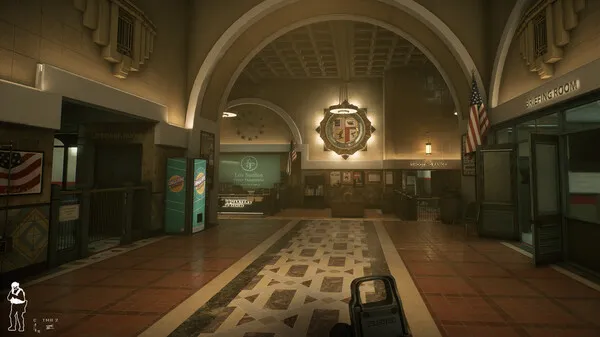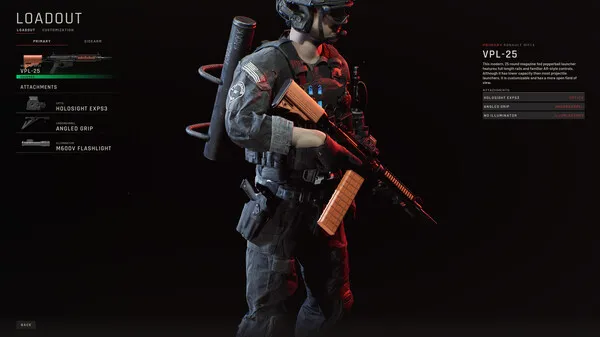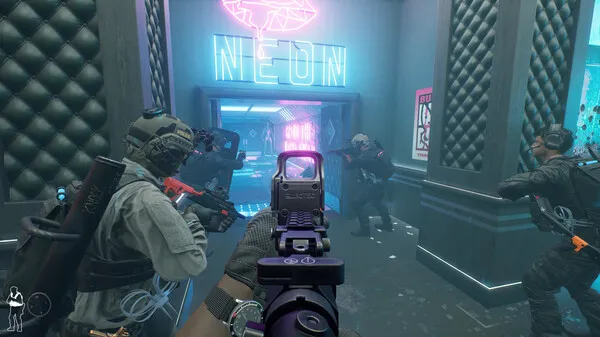Ready or Not, developed by VOID Interactive, is a tactical FPS that immerses players in high-stakes SWAT operations. Its commitment to realism and tension has earned praise, but one persistent issue threatens its credibility: the erratic and often illogical behavior of AI-controlled suspects, civilians, and teammates. This article dives deep into the evolution of this problem, its impact on gameplay, and the community’s demand for meaningful solutions.
Early AI Ambitions: Fragile Foundations
During its early access phase, Ready or Not introduced AI systems that aimed for realism. Suspects could surrender, flee, or engage based on player actions. Civilians were designed to react unpredictably, adding tension to every encounter.
However, even in these early builds, cracks appeared. Suspects would charge into gunfire irrationally, civilians wandered into active combat zones, and AI routines collapsed under pressure. These issues revealed that the foundational logic—especially pathfinding and threat recognition—was not robust enough for complex scenarios.
Patch 0.8: When Aggression Exposed Flaws
Patch 0.8 brought a major shift: suspects became more aggressive, flanking and ambushing players. While this increased tension, it also exposed deeper flaws. AI ignored environmental hazards, clipped through doors, and failed to react to flashbangs or non-lethal force.
Players began reporting missions that felt unfair—not due to difficulty, but due to broken logic. Suspects would rush officers with knives despite overwhelming odds, and civilians would sprint into danger zones. The line between realism and chaos blurred.
Hostage Rescue Missions: A System in Collapse
Hostage rescue missions are among the most intense in Ready or Not, requiring precision and restraint. Unfortunately, AI behavior in these scenarios is notoriously unreliable. Hostages often ignore commands, get stuck in geometry, or run toward armed suspects.
Suspects holding hostages also behave erratically—sometimes shooting their captives without provocation or ignoring officers entirely. These inconsistencies undermine the emotional weight and tactical nuance of hostage scenarios.
Command Wheel vs. AI Responsiveness
The command wheel allows players to issue orders to teammates and civilians. However, its effectiveness is often compromised by AI behavior. Civilians may ignore commands to “get down,” suspects may not respond to warnings, and teammates may misinterpret orders—leading to friendly fire or missed objectives.
This disconnect between player intent and AI execution creates frustration. Tactical shooters rely on precision, and when AI fails to respond predictably, the entire experience suffers.
Pathfinding and Environmental Awareness
One of the most glaring AI issues is pathfinding. Suspects and civilians frequently get stuck in doorways, clip through walls, or fail to navigate multi-level environments. This is especially problematic in complex maps like “Neon Tomb” or “Valley of the Dolls,” where verticality and tight corridors demand intelligent movement.
These pathfinding failures not only break immersion but can render missions unplayable. Officers may be unable to reach objectives, suspects may become unreachable, and civilians may die due to poor navigation.
AI Reaction to Non-Lethal Force
Ready or Not encourages non-lethal tactics—tasers, beanbag rounds, and flashbangs. However, AI response to these tools is wildly inconsistent. Suspects may shrug off taser hits, civilians may panic after being restrained, and flashbangs may have no effect depending on AI state.
This undermines the tactical philosophy of the game. Players who attempt restraint and precision are often punished by unpredictable AI reactions. VOID Interactive has attempted to tweak stun durations and surrender thresholds, but the results remain uneven.
Teammate AI: Support or Liability?
Teammate AI presents its own challenges. Officers may fail to clear rooms properly, ignore threats, or shoot suspects who are surrendering. These behaviors not only break realism but can result in mission penalties.
VOID Interactive has improved squad commands and positioning, but teammate AI still lacks situational awareness. Officers may stack improperly, fail to breach doors, or ignore downed teammates. This forces solo players to micromanage every encounter.
AI Behavior in Custom Maps and Mods
Community-created maps and mods have expanded Ready or Not’s content, but they also expose AI limitations. Custom environments often lack proper navmesh integration, causing suspects and civilians to behave erratically. Modded suspects may ignore cover, fail to engage, or freeze entirely.
VOID Interactive has provided limited support for modding, and without official AI tools, creators struggle to implement reliable behavior. This creates a fragmented experience where some maps feel polished, while others are plagued by broken AI.
Developer Response and Roadmap
VOID Interactive has acknowledged AI issues in multiple dev blogs and patch notes. They’ve promised improvements to pathfinding, threat detection, and command responsiveness. However, progress has been slow, and many fixes introduce new bugs.
The roadmap includes plans for AI overhaul, but without a dedicated AI team or public testing framework, skepticism remains. Players want transparency and consistency—not just promises. The community continues to push for open beta testing and AI sandbox tools.
Conclusion: Tactical Excellence Demands Intelligent AI
Ready or Not aspires to be the definitive tactical shooter, but its AI behavior crisis threatens that vision. From erratic suspects to unresponsive civilians and unreliable teammates, the game’s realism is undermined by technical shortcomings. VOID Interactive must prioritize AI development—not just for immersion, but for mission integrity and player trust.
Until then, players will continue to navigate a world where tactical precision is often sabotaged by unpredictable AI. The tension is real—but so is the frustration. For Ready or Not to truly fulfill its promise, intelligent AI must become its foundation, not its flaw

















